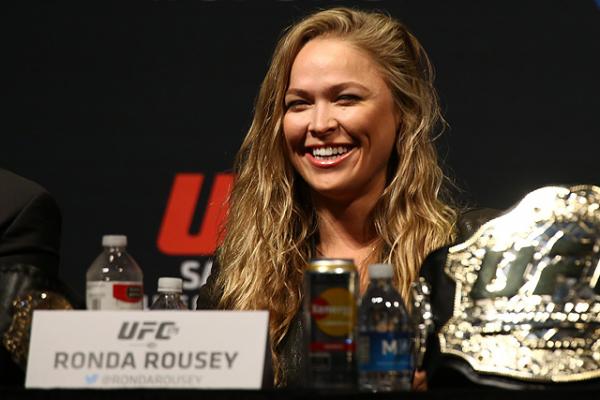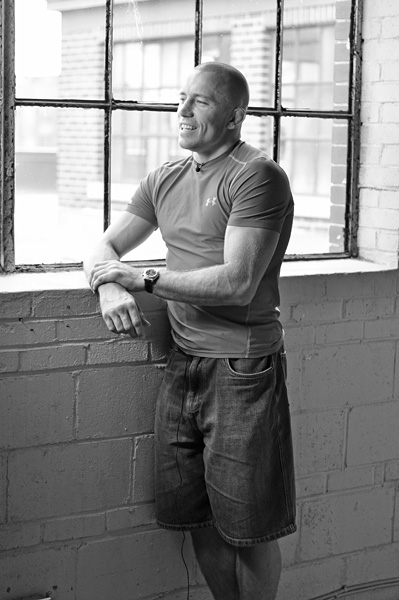Exploring the Keys to the UFC’s Biggest Events
Drawing Power

Ronda Rousey has become a household name. | Photo: Dave
Mandel/Sherdog.com
After a rough couple of years when it came to producing top-level pay-per-view attractions, the Ultimate Fighting Championship has struck it big in the second half of 2015. Riding the ascents of Ronda Rousey and Conor McGregor, the UFC drew shockingly high numbers for its last two PPV events with UFC 189 and UFC 190. In December, UFC 194 is likely to beat out both if injuries do not intervene, and UFC 195 in January is another potential box-office smash. Those sorts of massive events are the lifeblood of the sport, capturing the larger public’s imagination and enhancing the value of all associated fighters.
Any combat sports organization, of course, would love to have as many of those sorts of events as possible. The big question involves how exactly to do so. There is no one formula, but looking at the history of the UFC’s top pay-per-view cards offers trends of what worked in the past and what is more likely to deliver in the future.
Advertisement
For those 19 UFC events to top 750,000 buys, there are a number of factors that have contributed to their success. I have boiled it down to four that loom largest in making a difference, but there are many other smaller ones. For example, title fights have generally drawn bigger over the years than non-title fights. They have not made a massive difference and almost every single elite card has featured at least one, but that is a real factor. Other smaller factors include “Ultimate Fighter” promotion, above-average media coverage, time of year and a particularly good “Countdown” show.
The four factors that have loomed largest and most often in
distinguishing the biggest events have been the presence of a mega
star, a grudge match, a stacked card and/or a unique element. Every
card of the top 19 has had at least one of those factors going for
it, and many have had a number of them.
There is not a neat way to distinguish a mega star. Pay-per-view is star-driven, in general, and there are many levels when it comes to drawing power. Complicating matters is that many of the biggest stars of all-time have gone from a non-draw to a draw to an elite draw and back over the course of their careers.
Tito Ortiz is a good example. He was not a draw at first. Over time, he turned into a draw but on a limited level. He eventually evolved into a mega star, making a huge difference on pay-per-view. Then he moved back to being a draw but not at his previous level.
There are plenty of other examples. Anderson Silva was a subpar draw, then a decent draw and then a massive draw. Jon Jones became one of UFC’s biggest stars but never reached the point where just having his name on the marquee meant a huge pay-per-view number. Ronda Rousey was a draw when she came to the UFC but then moved to a different level. “Mega star” is a term used to distinguish the biggest MMA drawing cards of all-time at the peak of their drawing power.
Those considered a mega star here are Ortiz (≈2006), Ken Shamrock (≈2006), Chuck Liddell (≈2006-2008), Randy Couture (≈2007-2008), Brock Lesnar (≈2008-2010), Georges St. Pierre (≈2008-2013), Anderson Silva (≈2011-2013), Rousey (≈2013-) and McGregor (≈2015-). It is striking how long St. Pierre remained a big attraction given that few fighters remain at that level for long.
Often, it takes years of greatness to fully capture the public’s imagination, and by the time that occurs, one’s athletic prime is over and key losses start piling up.
What constitutes a grudge match is also a little messy. The UFC and most combat sports entities try to play up personal rivalries all the time. Moreover, fighters tend not to go into fights with fuzzy feelings towards their opponents. Some degree of antagonism is usually there. Thus, grudge match here is being used to describe fights where there was the perception of a particularly strong element of dislike between the two fighters. “Perception” is an important caveat because what is important is what fans thought going into the fight. That is what sold the shows. St. Pierre, in particular, would play up grudges at times when they did not really exist in order to sell what Nick Diaz famously termed “wolf tickets” to the public.
The grudge matches being referenced here are Ortiz-Shamrock, Liddell-Ortiz, Quinton Jackson- Wanderlei Silva, Brock Lesnar-Frank Mir, Dan Henderson-Michael Bisping, Jackson-Rashad Evans, St. Pierre-Josh Koscheck, Anderson Silva-Chael Sonnen, St. Pierre-Diaz, Rousey-Miesha Tate, Jones-Daniel Cormier and Rousey-Bethe Correia. In all instances, the public went into the fights sold on the idea that the fighters hated each other. In almost all instances, the public was very much correct.
Stacked cards are much easier to define. For the purposes of this discussion, that does not have to do with cards that are deep with compelling fights to hardcore fight fans. UFC 126 had Donald Cerrone, Chad Mendes, Demetrious Johnson and Norifumi Yamamoto on the preliminary portion of the card, but it was not like their presence added to pay-per-view buys. Rather, stacked cards here are when the UFC has loaded up lineups with multiple big-money attractions that could individually have sold pay-per-views. That has not happened all that often, but when it does occur, sometimes the whole adds up to more than the sum of the parts.
Of the four cards defined as stacked from a drawing standpoint, three had three major fights. They were UFC 92, with title fights featuring Evans-Forrest Griffin and Mir-Antonio Rodrigo Nogueira, plus a Jackson-Wanderlei Silva grudge match; UFC 100, with title fights featuring Lesnar-Mir and St. Pierre- Thiago Alves, plus a Henderson-Bisping grudge match; and UFC 129, with title fights featuring St. Pierre-Jake Shields and Jose Aldo-Mark Hominick, plus Couture’s retirement fight against Lyoto Machida. The fourth stacked card, UFC 168, only had two top attractions, but it featured two of the biggest fights of the year on the same card in Chris Weidman-Anderson Silva and Rousey-Tate. It is not unusual to see two major fights on the same card, but it is extremely rare to see two of the four biggest fights in a calendar year on the same event.
The fourth category of unique elements is a catchall for other major difference-makers that do not neatly fit into the other slots. There is always a variety of factors contributing to a show’s success or failure, but sometimes an unusual element will take a show to another level.
Finish Reading » Manufacturing a grudge is a lot easier than manufacturing a big star, making it an easy way to take big fights to another level. That is something many of MMA’s biggest stars have recognized over the years and is something that is likely to continue for as long as MMA itself does.
Related Articles







